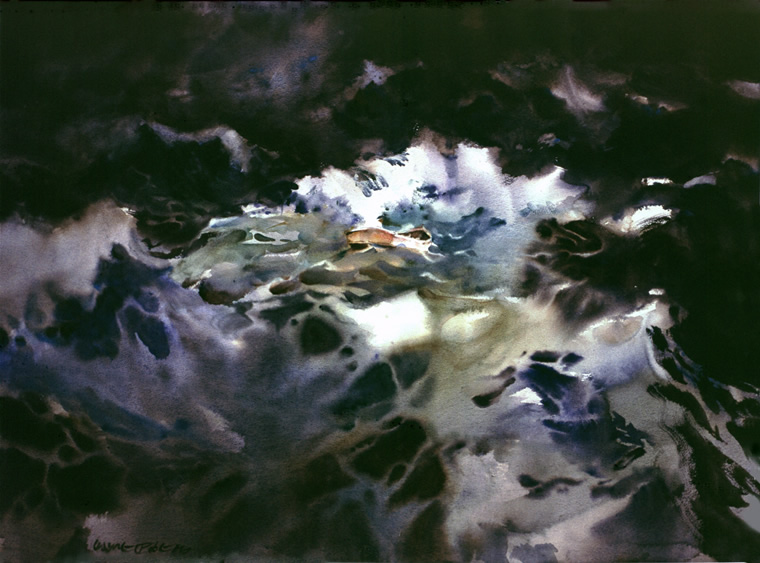
The Lifeboat
Winner of the Paul Schwartz Memorial Award, American Watercolor Society, New York, 1996
transparent watercolor on Lanaquarelle 300gsm cold-pressed paper, 56cm x 76cm
private collection
This painting was reproduced in the American Watercolor Society 1996 Annual.
The painting was also printed in the author's book, Principles of nature: towards a new visual language, 2003
The painting typifies and perhaps epitomises the artist's intuitive marine watercolors. In his interactive intuitive approach to seascapes, colors are applied to the paper which has been pre-dampened, working wet-into-wet. There is no preliminary drawing, no preliminary sketching or studies, nor any form of reference material. The colors ebb and flow on the wet paper in resonance with the nature of waves themselves—troughs and crests are 'suggested' in the early phases of the painting. The artist then applies further tones and colors in synchrony with the hinted emerging forms, working interactively and dynamically in real time and in concert with the painting. The entire painting process from start to finish is very much alive—like live improvisation in music.
Areas of white paper must be left for the breakers. Once the white paper is painted over there is no retrieving these 'whites' transparently. Furthermore, no masking fluid has been used. The technique is thus fully classical and true to the principles of transparent watercolor yet is distinguished from that tradition by virtue of the strength of the darks which expands the dynamic tonal range of an otherwise high-key medium. An unsual and distinctive aspect of many of the transparent watercolors of Wayne Roberts is the dynamic range he achieves from light to dark. It is very rare to see soft-focus but strong velvety darks in large-scale wet-in-wet transparent watercolor because firstly the colors are transparent and secondly there is a double dilution effect caused by the water on the brush (which is needed to charge the brush with pigment) which is added to the water on the wet surface of the paper. If the paper is too wet, the shape is lost and the strength of the dark gives way to a lighter shade. If the paper is too dry, a scratchy or gluggy or unsightly 'backwash effect' spoils the consistency and evenness of the dark washes. Anyone who has tried wet-in-wet watercolor will know immediately the difficulty of achieving these kinds of soft-edged yet strong darks without using black opaque pigment.
Home | art for medical research | selected watercolors 1 | selected watercolors 2 | theory work | contact/feedback
